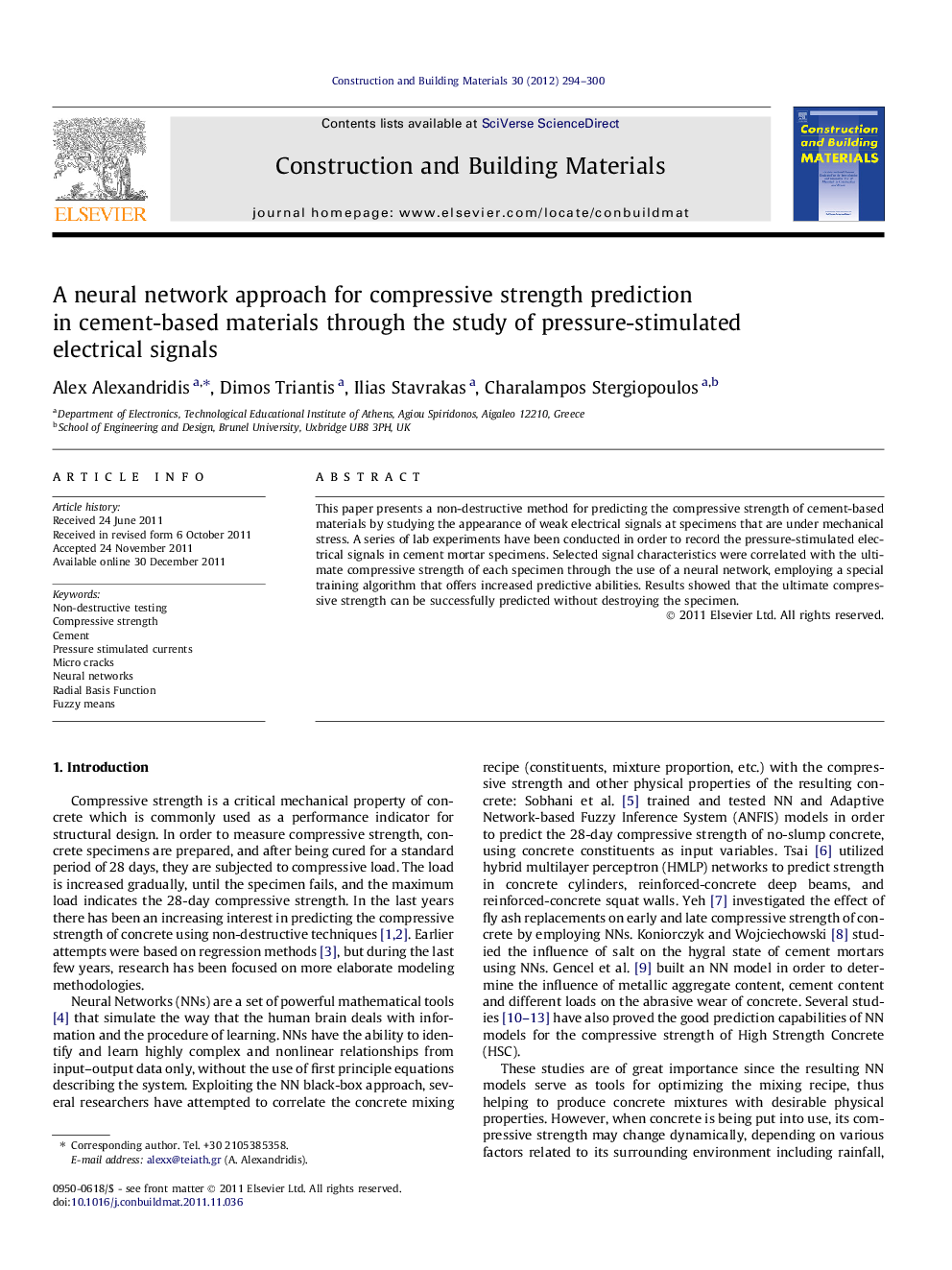| Article ID | Journal | Published Year | Pages | File Type |
|---|---|---|---|---|
| 258525 | Construction and Building Materials | 2012 | 7 Pages |
This paper presents a non-destructive method for predicting the compressive strength of cement-based materials by studying the appearance of weak electrical signals at specimens that are under mechanical stress. A series of lab experiments have been conducted in order to record the pressure-stimulated electrical signals in cement mortar specimens. Selected signal characteristics were correlated with the ultimate compressive strength of each specimen through the use of a neural network, employing a special training algorithm that offers increased predictive abilities. Results showed that the ultimate compressive strength can be successfully predicted without destroying the specimen.
Graphical abstractFigure optionsDownload full-size imageDownload as PowerPoint slideHighlights► Pressure-stimulated electrical signals were recorded in cement mortar specimens. ► Signal characteristics were correlated with specimen compressive strength. ► Radial Basis Function neural networks were used to produce the correlation. ► A special neural network training algorithm was employed for increased accuracy. ► Compressive strength was predicted successfully in a non-destructive manner.
